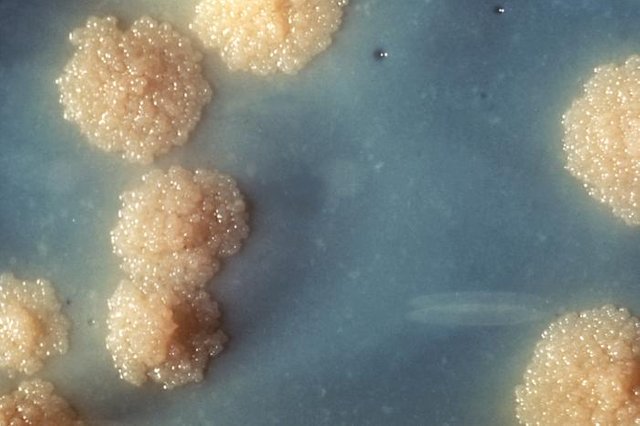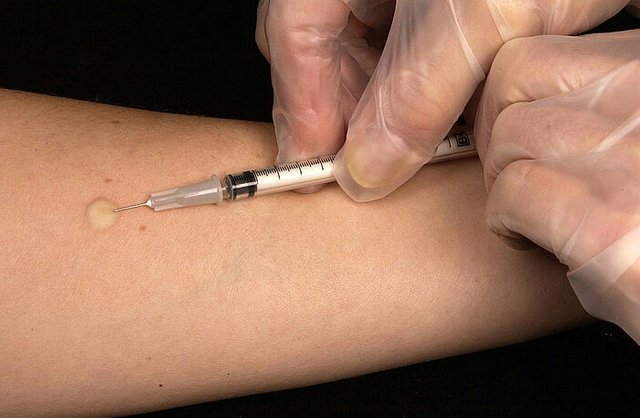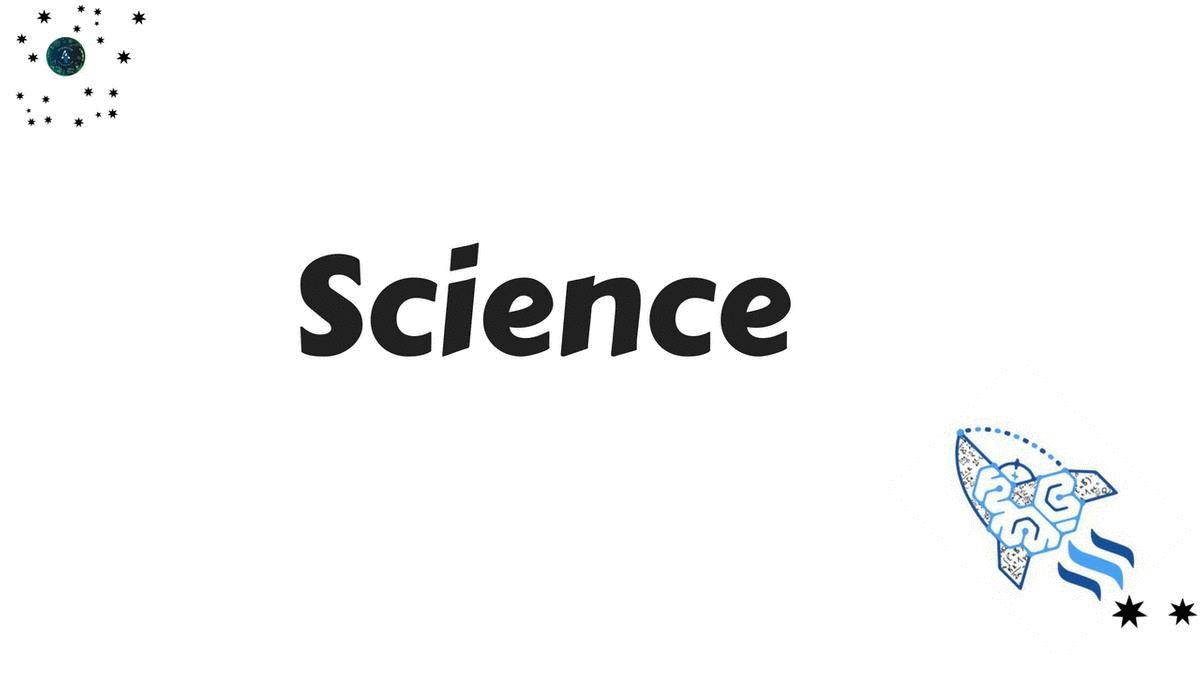The Prevalence of Koch's wasting disease and the advancement in its management and control
-1.jpg)
Expulsion of M. tuberculosis through sneezing BY James Gathany - CC BY 3.0, link
If you are reading this article and you're trying hard to comprehend the name of this 'arrogant' disease, you don't need to give yourself too much stress, it is still the same known but lightly handled disease referred to as Tuberculosis, commonly known as TB. I am not surprised with the pride tone that it has used to described itself, I am only surprised that it seems to be too confidence to have upper hand over other known diseases. I have tried to ruminate over why it has deem it fit to exalt itself to this level and have discovered that it was because humans has not done much to checkmate this diseases.
I have put together this information to enlighten us about the dreaded diseases, how it has boomeranged over the years and the likely approaches that can be used to checkmate its spread. Just like it has described itself;*Tuberculosis * (koch diseases, wasting disease or white phage, as called when it was first discovered) is an air-born human disease caused by a type of bacterium known as Mycobaterium tuberculosis; a gram positive bacilli bacteria. It is classified as a communicable disease because of it's ability to spread from an infected person to a susceptible person through the air contaminated with the bacteria.
As to its claim of causing more deaths than any other diseases, this might be questionable but not absolutely wrong. Reports from the world Health Organization in 2017 ranked tuberculosis to be among the top ten causes of death in the world. In the order in which it was listed, tuberculosis was ranked the 9th cause of death after Ischaemic Heart disease, Stroke, Chronic obstructive pulmonary disease, Lower respiratory infection, Dementias, lung cancer, diabetes, Road injury and Diarrhoeal diseases.source However, it was ranked as the 2nd cause of death among the all time communicable diseases in both the lower and upper middle income countriessource and the leading cause of death of HIV infected people.
How did Tuberculosis find its way to Humans?
One of the things I have actually thought about was how Tuberculosis was first discovered and how it has found its way to humans. From my study, I got to know that TB was first discovered about seventeen thousand years ago in the bone of an animal called Bison, an ancient specie of Buffalo source .

Picture of Bisson - CC BY 3.0, link
This disease was later discovered in cattles which have been found to have contacts with wild life animals. As time progresses, similar symptoms as found in these animals were discovered in humans due to the domestification of cattles and were thought to have originated from Africa. Recent research also proved this when Egyptian mummies were discovered in early Egyptian art source and were identified through DNA amplification of its tissue.
Before now, Tuberculosis was generally believed to be an infectious and inheritable disease. A further study by scientists which tried to look into its etiology led to the discovery of the Bacteria (Mycobacterium tuberculosis) by Robert Koch in 1882 source. However, in 1890, a milestone was reached when Robert Koch reported to have isolated a substance known as the tubercle bacilli which is able to de-activate the pathogenicity of Mycobacterium tuberculosis found in the body. This further resulted to the joint research of scientists from the New York health department which led to the first published report of 1893 on tuberculosis.
Another milestone was reached when the substance of the tubercle bacilli was made into an injection to cure the diseases. Further invention was made after a comprehensive research by the World Health Organization which led to the invention of a skin tuberculine test to diagnosis the TB infection. Further studies led to the discovery of other mycobacterial drugs such as the streptomycin, isoniazid, rifampicin etc
Identifying a Presumptive Tuberculosis Case
Tuberculosis is rapidly getting more attention in public health than any other communicable diseases because of the medium through which it is transmitted. The causal organism of this disease (Mycobacterium tuberculosis) is the most virulent specie of the other species from the same genus namely M. africanum, M. bovis, M. caprae, M. microti, M. mungi, M. orygis, and M. pinnipedii. It is a gram negative, non-spore producing organism with a non motile rod shape when viewed under a microscope. It is also one of the most recalcitrant bacteria known to have the ability to withstand weak disinfectant.

M. tuberculosis culture BY Dr. George Kubica - CC BY 3.0, link
We also need to know that identifying a TB infected person is more easier than people thought. This is because a suspected TB person (known as a Presumptive TB case) always show symptoms that are peculiar to the disease. Some of these symptoms that are peculiar to the disease include coughing for two or more weeks, irregular breathing, loss of appetite, night sweat, weight loss, chest pain, tiredness, fever, and maybe accompanied by other respiratory diseases. However, some sets of people are more susceptible to the disease than others. Such persons like people living with HIV, children whose parents/guardians have been diagnosed and confirmed to have TB, people who live in crowded/poorly ventilated places and those who have been treated in the past.
Transmission of this bacterium occur through the inhalation of air contaminated with the Tuberculosis bacilli by a susceptible person. The bacterial air-droplet gets to another person when the infected person cough, sneeze, talk, or spits. If an infected person is not properly treated, he/she can infect an average of 10-20 persons every yearsource. It is also worthy to note that a person can experience what is known as latent TB infection, which depicts a situation where a person infected by M. Tuberculosis shows no symptoms of the disease. This bacterium can lie dormant in the body for a very long time without the person falling sick but whenever the patient's immunity gets compromised, the bacterium can cause an active TB disease leading to the progression from an infection to a disease.
A look at the forms of tuberculosis based on anatomical site of disease and drug usage
It is important for me to state the forms in which tuberculosis can take; this will help in understanding the differences in symptoms or signs, diagnosis, approach to management and treatment.
-1.png)
Pulmonary TB BY James Heilman - CC BY 3.0, link
1. Pulmonary tuberculosis
A quick look at the onset of the illness shows that the bacteria causing the disease attacks the lungs causing what is known as a Pulmonary TB. It is a form of tuberculosis that involves the lung parenchyma (tissues) and is characterized by lesions in the lungs. As stated before, it's symptoms are coughing for more than two weeks, coughing out sputum/blood, pain in the chest when breathing or coughing. However, constitutional symptoms that can develop are loss of appetite, fever, weight loss, night sweats and tiredness.
2. Extra-Pulmonary Tuberculosis (EPTB)
This type of tuberculosis is more complicated than the Pulmonary TB and is characterized by the sites of maximal disease involvement. It involves the attack of one or more organs other than the lungs. This time around, the M. tuberculosis is detected in other parts of the body other than the lungs such as pleura, skin, abdomen, lymph nodes, genito-urinary tract, meningitis, joints and bones. The symptoms however depends largely on the site involved. In addition to the symptoms listed for pulmonary TB, chills and malaise (a feeling of general discomfort or illness) are common to EPTB.
However, the typical clinical presentations for EPTB cases are TB Adenitis (asymmetrical, painless, non-tender lymph, node enlargement for more than one month), Abdominal TB (Abdominal masses swelling with ascites), TB bone and joint (Swelling end of long bones with limitation of movement), Pleural TB (Respiratory distress, dullness on percussion, reduced breath sound, chest pain) Miliary TB (lethargic fever), Spinal TB (Deformity of spine, lower limb weakness), TB meningitis (Headache, irritabilty, vomiting, reduced level of consciousness, convulsions, neck stiffness, cradial nerve palsies) and Pericardial TB (distant heart sound, apex beat difficult to palpate and symptoms of cardiac failure).
3. Drug Resistant Tuberculosis (DR-TB)
The most complicated TB case is the emergence of resistance to drugs used in tuberculosis treatment known as drug resistance. A patient is considered to be drug resistant if and only if he/she is confirmed by a laboratory test to be resistant to one or more anti - tuberculosis drugs.
-1.jpg)
X-ray of chest showing TB BY Tony H. - CC BY 3.0, link
This can be as a result of factors ranging from poor quality of drugs administered, wrong drug combinations, failure to adhere to drug use and dosing, wrong duration of treatment etc.
It is also important to understand some of the categories of drug resistant TB case. When a DR-TB is resistant to only first line anti-TB drug, it is known as Mono-resistance DR-TB, but when it is more than a first line anti-TB drug it is referred to as Poly-resistance DR-TB. If the resistance is at least both isoniazid and rifampicin, it is called Multidrug-resistance, but if the resistance is to any Fluoroquinolone and at least one of the three second-line injectable drugs, it is called an Extensive drug resistance.
However, inorder to detect the DR-TB cases, we need to look out for symptoms of TB in anybody who live with or in contact with a confirmed DR-TB patient; anybody whose laboratory test (AFB result) is smear positive when repeated at the end of the third month of regimen 1 treatment; all previously treated drug susceptible TB cases who has a relapse or whose treatment failed after the first regimen; and persons with unknown TB history and or have been previously treated for tuberculosis.
Approach to the diagnosis of tuberculosis
After detecting a presumptive TB case, the next line of action is for a TB officer to collect the person's sputum in order to present it for the detection of TB bacilli. Several laboratory methods have been develop in order to identify this organism. Such laboratory methods are

Skin Tuberculine Test BY Greg Knobloch - CC BY 3.0, link
●Sputum/Smear Microscopy: Sptum microscopy remains the simplest and the primary test for the detection of the TB bacteria in the sputum of a suspected patient. It involves the use of staining methods such as the Ziehl-Nielsen staining or the fluorescent Auramine staining to detect the acid fast bacilli.
●Molecular rapid test method: This method makes use of molecular test developed through polymerized chain reaction (PCR) to identify the TB bacteria. The GeneXpert Multidrug TB (also known as the Rifampicin rapid testing) and the Line Probe Assays are diagnostic tests essential for both the drug susceptible and drug resistant tuberculosis.
●Culture Methods: the culture method is ideal for the bacteriological diagnosis of patient's sputum. Though has a slow bacterial growth of about 3-4 weeks, it is more sensitive than the sputum microscopy fue to the detection of a larger number of cases with TB symptoms.
●Other diagnostic tests such as the chest x-ray, ultrasound, computerized tomography (CT scan) and magnetic resonance imaging (MRI), the tuberculin skin test, histological test, and the chemistry of cerebrospinal fluid are also considered as valid diagnostic tools.
Approach to treatment of tuberculosis
After the confirmation of the type of tuberculosis a patient has, treatment is commenced immediately and a Directly Observed Treatment (DOT) person is attached to the patient. A DOT person ensures that the TB patient takes the right drugs, in the right doses and at the right time. All anti-TB drugs vary in properties and maybe bactericidal, bacteriostatic or have the abilityto prevent resistance. The first line anti-TB drugs are Isoniazid (H), Rifampicin (R), Rifabutin (Rfb), Pyrazinamide (Z), and Ethambutol (E).
.jpg)
A TB patient given daily treatment at a Health Centre BY AusAID - CC BY 3.0, link
Standard drug combination has however been adopted for the treatnent of all cases; this involves:
1. The standard 6 months treatment regimen for pulmonary TB: The regime involves the use of the combined Rifampicin, Isoniazid, Pyrazinamide, Ethambutol (RHZE) for the first 2 months of the intensive phase and Rifampicin and Isoniazid (RH) for the last 4 months of treatment (continuation phase). This means that the coverage for this regimen is for a period of 6 months.
2. The standard 12 months treatment regimen for extra-pulmonary TB especially for TB meningitis and Osteo-articular TB: The regime involves the use of the combined Rifampicin, Isoniazid, Pyrazinamide, Ethambutol (RHZE) for 2 months intensive phase; and Rifampicin and Isoniazid (RH) for the another 10 months of continuation phase of treatment. This means that the coverage for this regimen is for a period of 12 months.
3. The standard 20 months treatment regimen for DR-TB: The regime involves the use of the injectable Kenamycin with the combined drugs containing Pyrazinamide, Cycloserine, Levofloxacin and Prothionamide for 8 months intensive phase; and 12 months of continuation phase in which the drugs has been stopped and the other four drugs (Pyrazinamide, Cycloserine, Levofloxacin and Prothionamide) were only used.
Conclusion
Let me conclude by reminding us that it is everyone's duty to drastically reduce the prevalence of this diseases. The best way to do this is to refer anyone who is coughing for more than two weeks to the nearest health facility. Another important duty is for us to support People living with TB. This can be done by preventing any form of stigmatization, helping them to ensure they adhere to their daily use of drugs and encouraging them not to feel rejected in the society.
Thank you for Reading
Prevention is better than cure. Please consult your Medical Doctor for guidance on all health related issues
All Images Used In This Article, Are Linked To The Respective Owners

| REFERENCES |
The top ten causes of death http://www.who.int/en/news-room/fact-sheets/detail/the-top-10-causes-of-death
Thomas M. D. 2006. History of tuberculosis:an historical review. Journal of Respiratory Medicine. Volume 100, Issue 11, November 2006, Pages 1862-1870 https://www.sciencedirect.com/science/article/pii/S095461110600401X#bib14
Tuberculosis facts https://www.medicinenet.com/script/main/art.asp?articlekey=26602#tuberculosis_tb_facts
Tuberculosis: Causes and spread https://www.news-medical.net/health/What-is-Tuberculosis.aspx
Wanted: Leaders for a TB-Free United States. We can make history. End TB. https://www.cdc.gov/tb/worldtbday/history.htm

If you write STEM (Science, Technology, Engineering, and Mathematics) related posts, consider joining #steemSTEM on discord here. If you are from Nigeria, you may want to include the #stemng tag in your post. You can visit this blog by @stemng for more details. You can also check this blog post by @steemstem here and this guidelines here for help on how to be a member of @steemstem. Please also check this blog post from @steemstem on proper use of images devoid of copyright issues.


Join us at Air-Clinic, a platform aimed at providing quick, accessible, affordable global healthcare all round the clock. Our core vision encourages social engagement to foster interactive healthcare deliver. We are utilizing the benefits of the steem blockchain and smart media token technology to bootstrap the growth of the project and provide a valuable service for all globally.
DOWNLOAD AIR-CLINIC ANDROID APP
JOIN OUR DISCORD COMMUNITY
JOIN OUR WHATSAPP AIRCOIN BOUNTY COMMUNITY


This post has been voted on by the steemstem curation team and voting trail.
There is more to SteemSTEM than just writing posts, check here for some more tips on being a community member. You can also join our discord here to get to know the rest of the community!
Thank you for the encouragement @steemstem
This is a wonderful breakdown of tuberculosis. Reading through this post reminds me of my experience at TB (DOT) laboratory of the University of Ilorin Teaching Hospital. Every clinic days will be like all the citizens were having TB.
Great job @teemike
Ohhhh, thank you for reading through...
Yeaaa... it's really a worthy opportunity to render your service for the eradication of the disease.
Thank you for the compliment
Hello @teemike,
Air-Clinic sends her greeting!
We are happy that you are creating amazing medical contents on Steemit using the #Air-Clinic tag.
This article was found as a result of #Air-Curie Initiative!We encourage you to keep it up!
Expect an upvote from @Air-Clinic soon!
If you haven't joined us on Discord please do so by clicking here
Cheers!
@drqbm- Air-Clinic Curator!
Thanks for the compliment and finding my article worthy
If I should hear about any disease or any out break of diseases, first thing I would like to know is it origin. Heard of tuberculosis countless times but on this only I have never made a research where it originated from, before coming into human. But I just got this in ur article.
Thanks for the enlightenment! @teemike
And should we say most wide lives has one diseases or the other? Cos bison is also one of them
Wildlife animals are more prone to diseases. So, they are likely to infect human (zoonosis) through their domestication.
Thank you for reading
So, now u mean if I should see a wide life animal I should pick a race and run run run?👅
Lolzzz😂😂, except for domestication (zoos, wildlife park etc), wildlife animals restrict themselves outside human reach; those domesticated nowadays must have gone through adequate screening and cannot transmit diseases.
Congratulations @teemike! You have completed the following achievement on Steemit and have been rewarded with new badge(s) :
Click on the badge to view your Board of Honor.
If you no longer want to receive notifications, reply to this comment with the word
STOPCongratulations! This post has been upvoted from the communal account, @minnowsupport, by teemike from the Minnow Support Project. It's a witness project run by aggroed, ausbitbank, teamsteem, theprophet0, someguy123, neoxian, followbtcnews, and netuoso. The goal is to help Steemit grow by supporting Minnows. Please find us at the Peace, Abundance, and Liberty Network (PALnet) Discord Channel. It's a completely public and open space to all members of the Steemit community who voluntarily choose to be there.
If you would like to delegate to the Minnow Support Project you can do so by clicking on the following links: 50SP, 100SP, 250SP, 500SP, 1000SP, 5000SP.
Be sure to leave at least 50SP undelegated on your account.